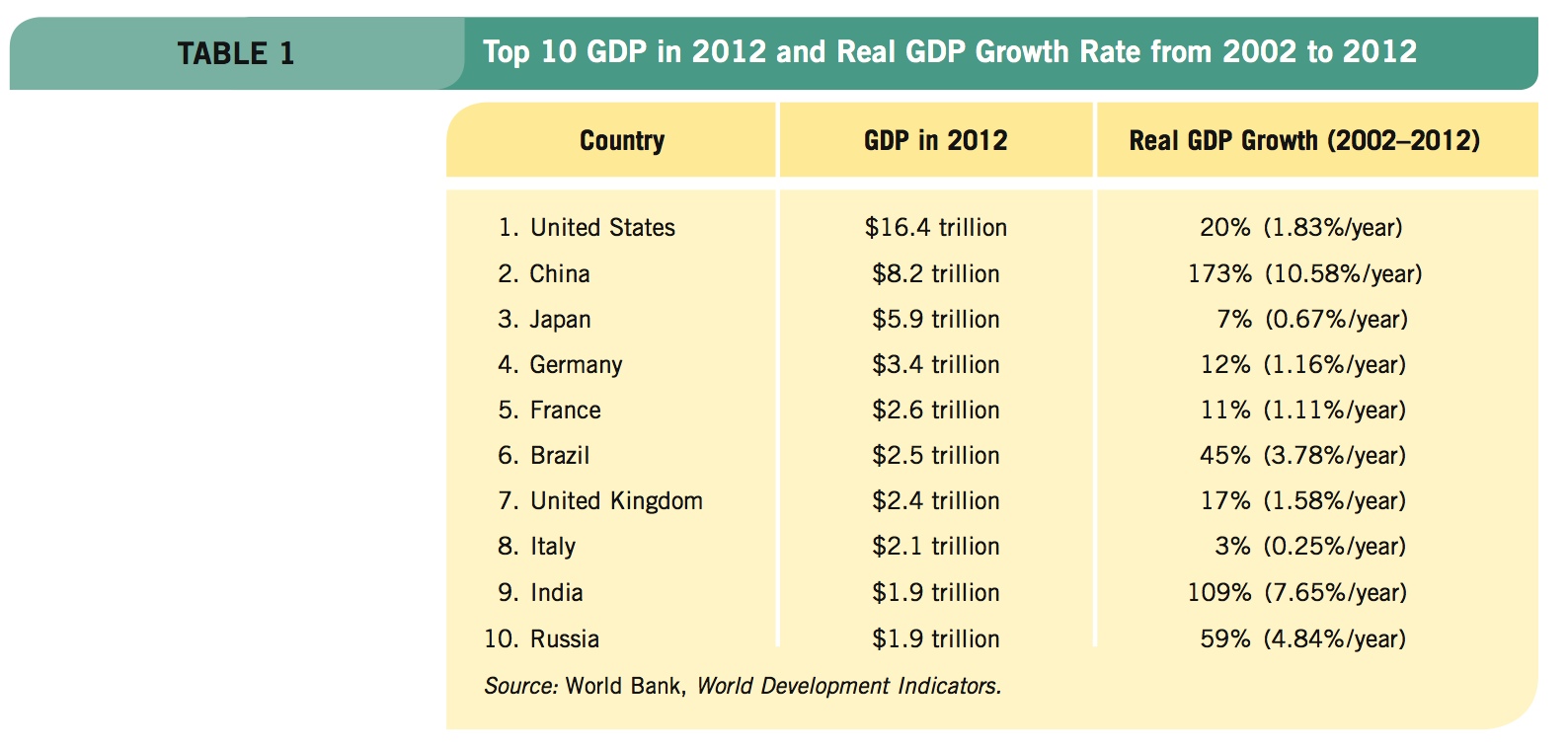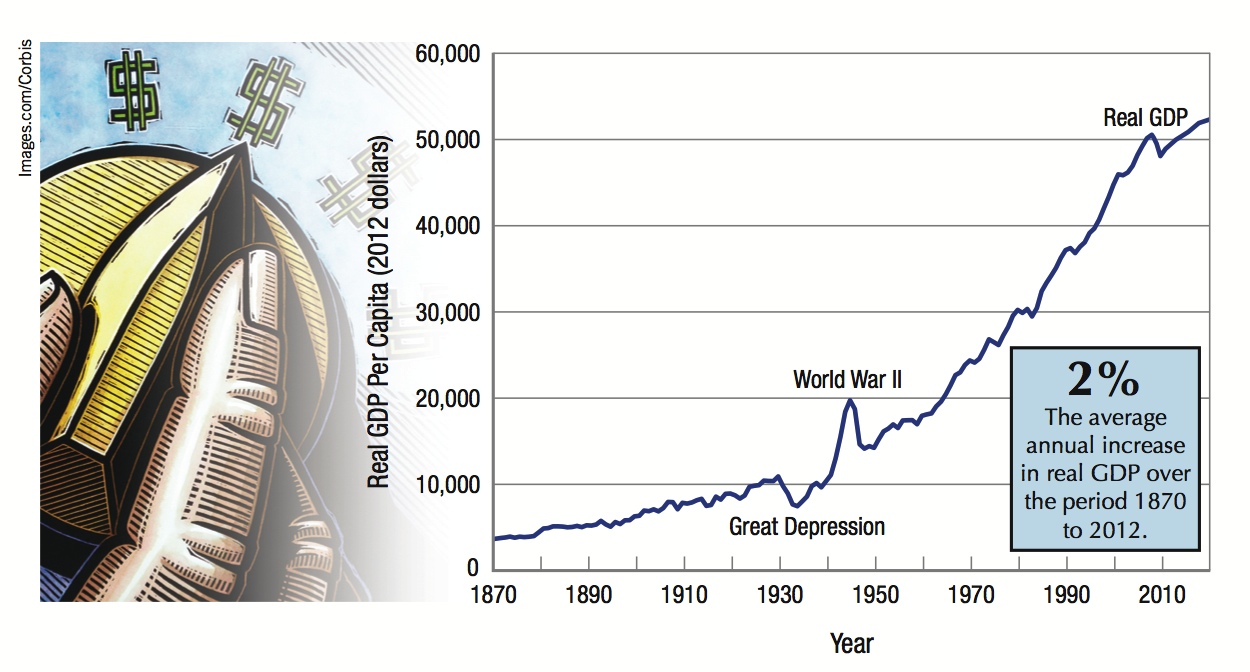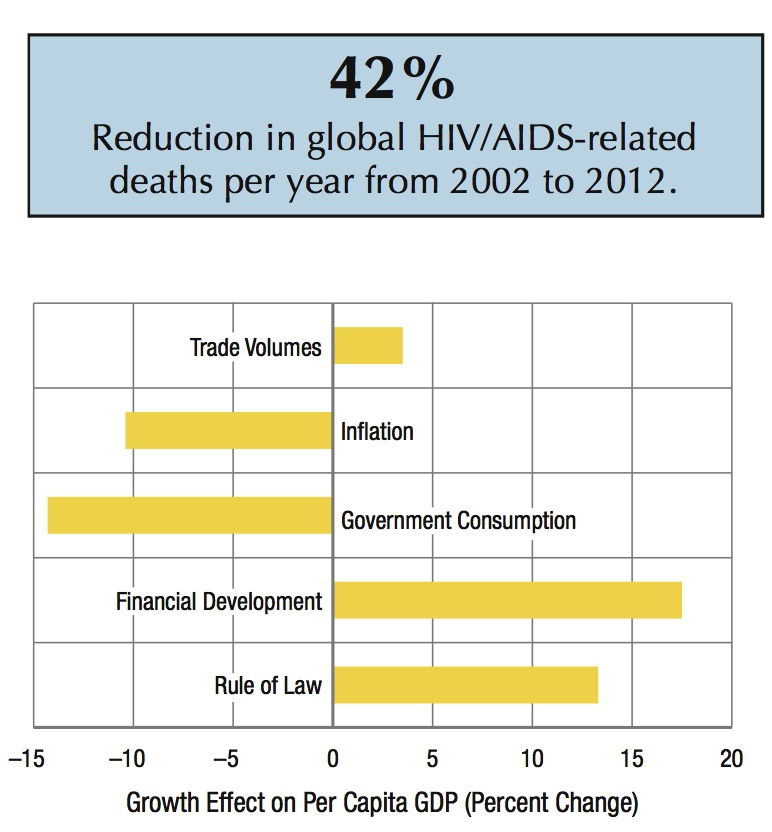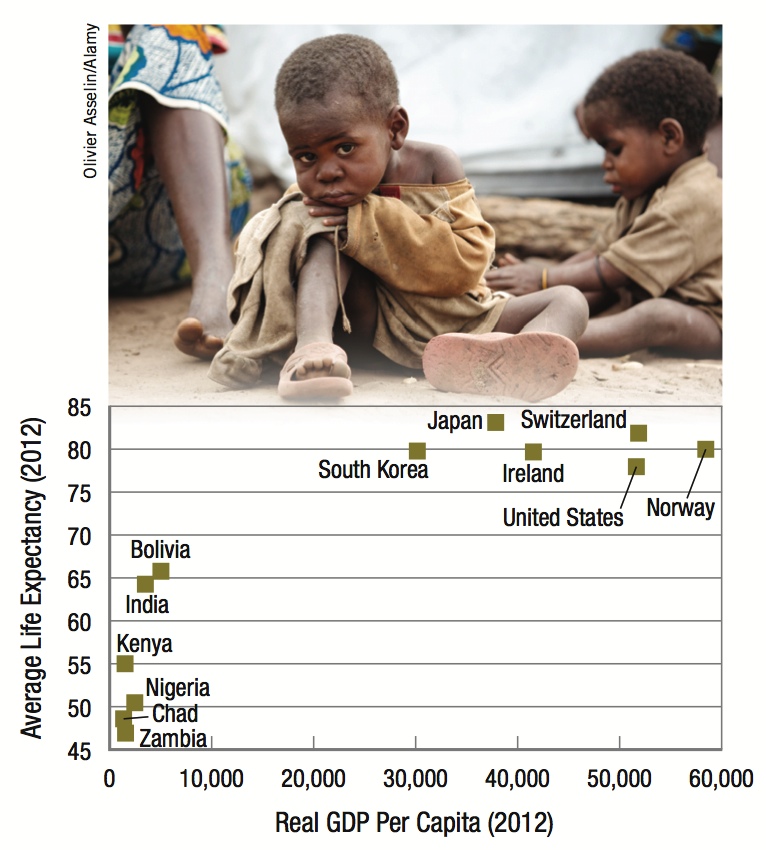Chapter Introduction

After studying this chapter you should be able to:
- Describe how economic growth is measured using real GDP and real GDP per capita.
- Discuss the relationship between a country’s economic growth rate and its standard of living.
- Explain the power of compounding in making small differences much larger over time.
- Use the Rule of 70 to approximate the number of years it takes for an economy to double in size.
- Describe a production function and how it estimates economic output.
- Explain how the four factors of production contribute to economic growth.
- Describe the importance of innovation and technology in determining economic growth.
- Define infrastructure and explain its importance.
- Explain how the government promotes economic growth through the policies and laws it implements.
- Describe the relationship between economic freedom and economic growth.

Chang’an Avenue, Beijing (2007)
Majian/Dreamstime.com
On a typical downtown street in Beijing in the 1980s, one would see thousands of bicycles and pedestrians among a trickling of cars owned by the privileged few. The skyline consisted of just a few large buildings.
How times have changed. Today, the bicycles in Beijing have largely been replaced with cars driven by millions of Chinese whose incomes have increased enough to afford one, the skyline is dominated by modern skyscrapers, and the pedestrians have largely moved underground, traveling on one of the world’s most extensive and modern subway systems.
China’s transformation from a poor, agricultural nation to an emerging world power with a growing middle and upper class has been remarkable. China’s annual growth rate has averaged 9% over the past 20 years, compared to the average U.S. annual growth rate of 2% over the same period. Although a 7% difference might not seem significant, over 20 years the cumulative growth effect is staggering: China’s real GDP grew 518% from 1992 to 2012, while in the United States real GDP grew 64%.
economic growth Usually measured by the annual percentage change in real GDP, reflecting an improvement in the standard of living.
Economic growth plays a very powerful role in how people live and how standards of living change over time. Even small differences in growth rates turn into large differences over time.
Less than a generation ago, the United States, most of Europe, and the East Asian economies of Japan, Singapore, South Korea, Taiwan, and Hong Kong were the leaders of economic growth. These countries had consistent, strong growth while the rest of the world lagged behind.
Today, a much different picture emerges. Much of the developed world is still recovering from the devastating financial crisis and recession of 2007–2009, while a number of emerging countries now lead the world in terms of economic growth.
Most notable of high growth rates are the BRIC countries—Brazil, Russia, India, and China. In previous decades, each of these countries faced significant obstacles in achieving growth—Brazil with its high inflation, India with high poverty and population growth, and Russia and China with large populations and centralized governments. Today, as Table 1 shows, these four countries have the highest growth rates among major industrialized nations. In fact, all four countries ranked in the top ten in total GDP in 2012, a feat almost inconceivable 30 years ago.

What changed in the BRIC countries that led to rapid growth? In Brazil, economic policies encouraged innovation, such as ethanol production, which allowed it to be energy self-reliant. In Russia, a new simplified tax code reduced corruption as market efficiency improved and its abundant natural resources were tapped. In India, dramatic growth in foreign direct investment by companies eager to seek a growing educated labor force at low wages led to new industries. And in China, huge government investment in infrastructure, export-led policies, and the opening of limited free markets allowed the economy to skyrocket. But these reasons alone do not tell the entire story. It is the combination of many efforts and policies that lead to long-run economic growth.
Why Should We Care About Economic Growth?
Economic growth improves the standard of living of people through higher incomes and greater access to societal resources such as health care and clean water, which generally lead to a longer and healthier life.

Real GDP per capita has grown 13 times since 1870 in the United States. After adjusting for inflation, growth has averaged 2% per year over this period and has led to a high U.S. standard of living. Economic growth results from increases in the labor force and its productivity, increases in capital, and improvements in technology.
The Benefits of Growth in the United States (1980–2012)
- Property crime per 100,000 population fell 46%.
- Percent of the population with a four-year college degree increased from 17% to 31%.
- Percent of the population with at least a high school diploma increased from 69% to 88%.
- Life expectancy increased from 73 to 78 years.
- 453% increase in federal government spending on science, space, and technology.
- 39% increase in the number of degree-granting colleges and universities.

Good public policies promote growth. Implementing the rule of law, improving financial markets, and trading with other nations all promote growth. Higher government consumption and higher inflation harm growth.

Economic growth can lead to higher average life expectancies. Residents of rich countries generally live longer than residents of poor countries.
This chapter focuses on long-term economic growth and describes the conditions needed to sustain economic growth and improve standards of living. In the long run, all variables in the economy can adjust to changing conditions. The models in this chapter provide a framework for evaluating policies meant to encourage economic growth in the long run.